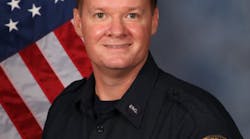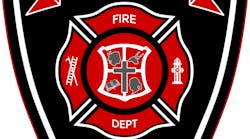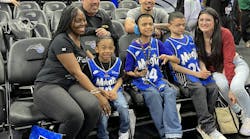Steve MacDonald provides day-by-day coverage of the unfolding Worcester tragedy, as firefighters came to the aid of comrades and their families.The Dec. 3, 1999, retirement party for Needham, MA, Firefighter Tom Welch had been going well. The room at Florian Hall in Boston, home to Boston Firefighters Local 718, was filled with firefighters from across the state. At the same time some 50 miles west of Boston, Box 1438 was being struck for a building fire at 266 Franklin St. in Worcester.
As the evening went on at Florian, many of the firefighters kept looking at their pagers. What they read was not good. The fire in Worcester had gone to five alarms and, more importantly, firefighters were missing. It was 7 P.M.
The president of the Professional Firefighters of Massachusetts (PFFM), Bob McCarthy, sought out International Association of Fire Fighters (IAFF) 3rd District Vice President Mike Mullane to brief him on the fire. McCarthy represents all Massachusetts union firefighters and Mullane all union firefighters in New England. The missing firefighters were members of one of New England’s strongest IAFF locals, Worcester Local 1009.
Many members of the PFFM’s newly formed Critical Incident Stress Debriefing (CISD) Team were also present at Florian. The decision was made to send the team at once to Worcester. It was now 8 P.M.
The retirement party continued with constant updates being phoned in to McCarthy. Then came the call they did not want to come. McCarthy told Mullane they were requested to respond to the fire scene in Worcester at once. Joining them was PFFM Secretary-Treasurer Ken Donnelly. As one of Boston Fire’s public information officers and an Executive Board member of Local 718, I volunteered to drive.
On the trip, Mullane started making phone calls. He contacted the executive assistant to IAFF General President Al Whitehead in Washington, D.C., Harold Schaitberger. It was agreed to get IAFF Health & Safety Director Richard Duffy and IAFF Communications Director George Burke to Worcester as soon as possible.
The team from Boston arrived in Worcester at 10:45 P.M. McCarthy, Mullane and Donnelly were briefed by the PFFM’s CISD Team. Next, they conferred with State Fire Marshal Stephen Coan,Worcester Fire Chief Dennis Budd, PFFM Vice President (7th District) Ron Armstrong and Worcester IAFF Local 1009 President Frank Raffa. It was confirmed that six Worcester firefighters had been missing since 7 P.M.
It was time to meet with the families of the six missing firefighters.
Coordinated efforts between the Worcester Fire and Police departments had the families taken to St. Stephen’s School. There, members of the PFFM’s CISD Team had secured classrooms for each family. The six missing firefighters had a combined 17 children. Five of the men were married. The families silently filed into the school, escorted by Worcester firefighters, chaplains and friends. It was 11 P.M.
Budd, Coan, Armstrong and Raffa together with the union officials from Boston made the short trip to St. Stephen’s School. The family members were assembled into one of the larger classrooms. Clergy, city officials and CISD Team members lined the walls. In the most difficult and emotional meeting I have ever witnessed as a firefighter, Budd told the families that their husbands, sons, brothers and fathers had been missing for several hours and there was little chance for survival. It was midnight.
Over the next few hours, the PFFM’s CISD Team assisted the families and, just as important, the Worcester firefighters. They rose to the occasion and for those who ever doubted the need for CISD, this night they had their answer.
On the ride back to Boston, we started to map out the coming days. We knew what we had to do. We also knew we would need more help.
Day 2
The fire was still burning and no recovery operation could begin until it was knocked down. The Worcester firefighters were working without sleep and on pure adrenaline. The whole department was there. No one was going anywhere as long as the six were still missing. We received word that Governor Paul Cellucci would be coming to the scene. He wanted to quietly meet with the families and the Worcester firefighters.
Coan put into operation a little-used plan that over the next two weeks provided fire companies from throughout Massachusetts to cover Worcester. Task forces of up to 15 units made the trip.
Boston Mayor Tom Menino called Mullane to offer all the resources of the city. At one point, Firefighter Butch King of Canton Fire showed up at the scene to report that he had already draped the 12 Worcester firehouses with black bunting. The PFFM CISD Team had little sleep and the need to start thinking about rotating shifts was put in motion. Budd made the decision that the recovery operation would not stop.
We set up operations at the Crowne Plaza Hotel in Worcester and blocked off 45 rooms to start. (Author’s note: When the term “we” is used, it refers to members of the IAFF, the PFFM, and the Worcester and Boston local unions.) Over the next several days, the hotel staff provided meeting space and unlimited coffee and sandwiches with their compliments. This Operations Center was put in place to start planning for the funerals and/or a memorial service.
Day 3
Sunday, Dec. 5, started with a meeting of the Worcester and Boston union officials together with Duffy and Burke of the IAFF national office. The Boston team consisted of Ralph Dowling, Mike Walsh and myself. The Worcester union already had in place a Funeral Committee headed by Mark Whalen. Both groups started a dialogue with Duffy and Burke about a memorial/funeral service.
The options were discussed with the consensus leaning toward one funeral service in the Worcester Centrum on Thursday, Dec. 9, if the families agreed. The Worcester Centrum was the obvious choice. It can hold 14,000 people and had the date available. At the time, we had no idea that the recovery of the six missing firefighters would extend far into next week. Next, we traveled to Worcester City Hall to meet with the mayor, city manager and other city officials. We briefed them on plans for one large funeral service with the possibility of making it a memorial service instead. During this meeting, word came from the fire scene that the first firefighter had been recovered. He was later identified as Timothy Jackson of Ladder 2.
We had a need to meet with the families to discuss what we would like to do. It was agreed if just one family did not want the one large funeral, we would then switch to a memorial service with six separate funerals before or after the service. Within 24 hours of the fire, McCarthy and Mullane decided to have the Worcester union assign a liaison to each family. This person would be a Worcester firefighter who knew the family and, more importantly, was trusted by the family. It was paramount to keep the families involved with all aspects of not just the planned memorial service, but also the recovery efforts.
All six families agreed to the Memorial Service. On Sunday evening, we met at the hotel to start planning the Memorial Service. The Worcester firefighters wanted a procession that would take those marching past the two firehouses where the six men worked.
Duffy laid out the Memorial Service. Using the IAFF’s experience in these matters, he said four elements are needed for a successful service: clergy, music, elected officials and firefighters.
As the PIO for Boston Fire, I have a good relationship with the Boston media. I teamed with Burke and together we coordinated the press with respect to the Memorial Service. In addition, we helped out at the fire scene with the Worcester Fire PIOs. The six Boston TV stations together with the two Boston daily newspapers and the Worcester Telegram were covering the incident around the clock.
Day 4
On Monday, Dec. 6, we met at the hotel at 9 A.M. Dowling’s file of contacts throughout the state was invaluable. Police escorts, bus transportation, radios, air support – you name it, Dowling had a source. He started with a task list and assignments were given out – this person would work on catering for 10,000 after the Memorial Service, that person on parking for the 15,000 who would march, this person on bagpipe bands. Then, it was back to City Hall to brief the city. The city had all the key decision-makers present, which made things go smoothly. We met with the general manager of the Worcester Centrum, Sandy Dunn. Nothing we requested was met with a no. The Centrum was booked for the next three nights, but Dunn and her staff would make it work.
Burke and Duffy kept in constant contact with their Washington office. What they were hearing was there was strong interest from the White House with the tragedy unfolding in Worcester. In fact, Vice President Al Gore at one point called Mullane for an update. His concern and support was genuine and much appreciated.
On Monday evening, we went up to the Centrum to do a walk through. In a most surreal setting, we toured the Centrum during a sold-out World Wrestling Federation show. The WWF visited the firehouse behind the Centrum and quietly dropped off checks totaling over $20,000 for the firefighters fund.
Day 5
On Tuesday morning, Dec. 7, the dynamics of the Memorial Service changed. Our usual 9 A.M. meeting was interrupted by Burke telling us that the White House had just confirmed that President Clinton would attend.
Operational support turned the fire scene into a small city. Hundreds of volunteers were feeding the firefighters around the clock, cases of socks and gloves arrived, photo IDs were being given out, heated tents with cots were set up, search dogs brought in, cranes working non-stop gently lifting off the floors of the fire building.
The media had decided that they would televise the procession and Memorial Service live. Not one or two stations, but all six Boston TV stations plus Worcester cable. In the end, CNN, MSNBC and Fox joined these stations. I handled most of the Boston media with Burke handling the national press.
At the hotel, we had our first meeting with members of the White House advance team. They stated that their instructions were to work with us and asked us our plans. Duffy went over the program and timetable.
Day 6
By Wednesday, Dec. 8, there was an urgency among the firefighters to recover the remaining four. No one wanted them still missing while the Memorial Service went on.
Whitehead met with the chief, the families, members of the Worcester local, the PFFM and the hundreds of IAFF members working the scene. While there, they received a call from Gore’s staff that he was coming to Worcester for the service.
The logistics were amazing, but doable. Dowling coordinated the use of over 100 buses and 50 police motorcycles, staging areas for thousands of firefighters, the pickup of the families, the State Police buglers for the service, etc. The media attention had made this a major national story.
Once word that both the President and Vice President were coming, the Memorial Service escalated to an event that none of us had ever worked – it is not often that the President and Vice President appear together outside of Washington.
Day 7: The Memorial Service
Dowling and Walsh were outside setting up the procession. We all had figured that we would get 15,000 to 20,000 firefighters in Worcester, but signs were starting to show that we had lowballed our estimate. Amtrak donated special trains from Boston and New York City. Bus after bus was arriving. Nova Scotia, Cleveland, Cape Cod, Vermont – they came from everywhere.
The weather was perfect. Along the procession route, the people of Worcester had taken their mayor’s advice to honor firefighters by viewing the procession. Thousands of spectators lined the streets, at some points six deep. No one will ever forget the schoolchildren. Their homemade signs offering support to all firefighters left an indelible mark.
We had decided that the main focal point of the procession for the media would be in front of the Central Street Firehouse. It was there that we set up the two Worcester ladder trucks with a 15-by-25-foot American flag. We originally figured six TV camera positions at this location; we ended up with 20.
The seating diagram had been worked out between Duffy and the White House. We had 14,000 seats to fill. We also had Worcester firefighters’ families, elected officials, union officials, clergy and the immediate families of the six firefighters inside the Centrum. It broke down as follows: 800 members of the families of the six firefighters; 2,600 members of the Worcester firefighters’ families; 100 members of the clergy; 500 elected officials, union officials and assorted dignitaries; and 10,000 firefighters.
The Memorial Service started at 11:40 A.M. It was unmatched in its dignity, remarkable for its simplicity and memorable for its pageantry. When the bagpipers began playing “Amazing Grace,” without a word said, everyone stood. All the speakers’ remarks addressed different elements. Some spoke to the immediate families, others to the firefighting community. Most were especially moved by Senator Ted Kennedy’s reading of a firefighter’s poem.
We called outside to the staging area to see how many firefighters they thought had marched. We were told that there were still firefighters waiting to march.
At the fire scene, crews continued the search for Tom Spencer, Jerry Lucey, Paul Brotherton and Joe McGuirk. Catching glances at the billboard-sized TV, they did not stop, pausing only during the playing of “Taps” to remove their helmets, place a hand over their hearts and say a quiet prayer.
Aftermath
It turned out that we had roughly 30,000 firefighters in Worcester, making this the largest firefighter memorial service ever in the United States. In the following days, the four missing firefighters were recovered. The first funeral was on Saturday, Dec. 11, and then one each day the following Monday through Friday.
This fire did more to raise the awareness of firefighters and what they do than any other single event I can remember. For once, the country had faces and families to put with the sacrifice firefighters make every day. During one four-hour period on Dec. 9, the world stopped to honor all firefighters. I hope the families of Tim, Jay, Tom, Jerry, Paul and Joe understand how much their loved ones did for us, and continue to do. They shall never be forgotten.





